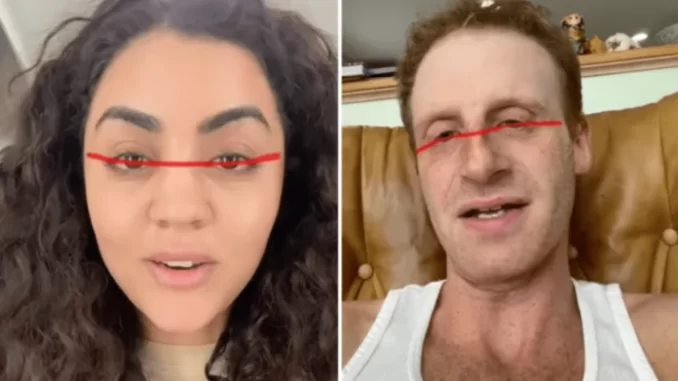
Canthal Tilt Videos & Photos Trending Tiktok. The angle between the eye corners, known as the canthal tilt, has become more popular on TikTok. Users discuss appealing perspectives and cultural influences while analyzing its significance in facial beauty.
The prevalence of the trend highlights how internet platforms spark discussions about appearance by encouraging users to reflect on their identities and values in light of evolving beauty standards.
But what is canthal tilt specifically, and why is it getting so much attention? To learn more about it, keep reading.
What Is Canthal Tilt Trending On Tiktok
Canthal tilt essentially refers to the angle that is produced between an individual’s inner and outer corners of their eyes. This small but important facial anatomical detail can be oriented in several ways.
When the outer corner of the eye tilts slightly upward in relation to the inner corner, this is known as a positive canthal tilt and it helps create a visually distinctive appearance.
A negative canthal tilt, on the other hand, creates a different image since the outer corner is inclined downward in respect to the inner corner. A neutral canthal tilt, which results in a reasonably straight eye line, is the absence of any discernible tilt.
Click Here to Watch the Le@ked Video Now
The launch of a special filter has increased the enthusiasm over canthal tilt on TikTok. This filter precisely draws a bright red line along the eye line to make the canthal tilt’s orientation—whether positive, negative, or neutral—more obvious.
The rise in interest in discovering and discussing one’s personal canthal tilt is definitely due to the filter’s user-friendliness and capacity to deliver fast visual feedback.
While incels are forming a movement around the filter, alleging that a negative canthal tilt is the cause of their failure in romantic relationships, the filter is just for fun and aesthetics.
This interpretation of the idea is faulty, though. Although canthal tilt contributes to facial look, it is not the only aspect that determines it. Beyond canthal tilt, there are actually a lot of other characteristics that enhance a person’s facial beauty.
Within the incel group in particular, a subculture has evolved amid the enthusiasm and playful involvement with this filter.
The term “incels,” short for “involuntary celibates,” has taken hold of the idea of canthal tilt, leading people to mistakenly attribute their perceived love disasters to this particular trait.
However, the complexity of attractiveness and relationships are oversimplified in this interpretation.
While canthal tilt can affect face looks, it is only one of many factors that go towards a person’s overall attractiveness.